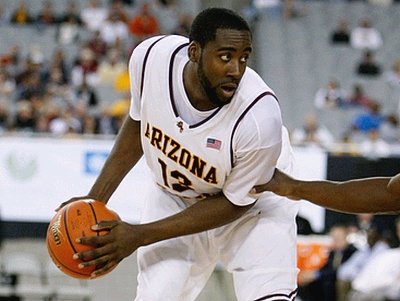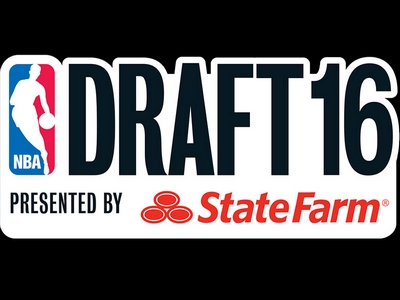Check out all of our combine data and see how prospects in this class stack up with players in our database from the last 10+ years. Keep in mind that you can sort them by position and by where they were drafted with the help of the drop-down menus on top.
Each year were presented with a spreadsheet of data from the athletic tests administered at the NBA combine, and each year we wonder just how relevant any of it really is. Though the conclusions that we can draw from the vast majority of the data is extremely limited, well nonetheless try to take something away from the information weve been presented with.
Trying to pinpoint a players athleticism based on their combine testing is akin to trying to get a feel for their basketball IQ by watching them play one-on-zero it simply doesnt make all that much sense. It does help us get a very general idea of where a player is at in terms of physical conditioning and strength, which often speaks to their work ethic, but rarely sheds much light on what it really aims to portray.
Unlike the NFL combine, all parties involved realize that few people put much stock in these results. Players arent trained in running 40-yard dashes from their days in high school like most gridiron stars and simply arent well versed in many of the events. Raw athletic data can be useful in a football setting where certain properties manifest themselves more completely on the field, but for the NBAs purposes, a players ¾ court sprint team is virtually meaningless on the top end.
In basketball, where anticipation and coordination play major roles in how players perform on the court, combine numbers will always take a back seat to how a player uses the tools it aims to measure in actual games. Scouts have done their homework, they know who the fastest players in the draft are, and know which athletes are the most explosive. The combine only provides them with a standardized metric that often fail to live up to the consistency of what they already know.
Despite our reservations about the data, it still exposes some players who land at the extremes of each test, and gives us the chance to draw some historical perspectives on certain stats. The combine does a decent job exposing which players are truly lacking in some aspects physically. At the end of the day though, the numbers these players posted at the combine are only as valuable as their ability to use them on the floor, and no matter how many times a player runs or jumps beyond his perceived means on test day, if he doesnt play athletic in games, hes not going to magically change his ways at the next level.
Note: Following the NBAs lead this year, weve added two measurements to our historical workout database, for every player ever tested at the pre-draft camp:
No Step Vert Reach - This is the total amount of reach a player gets jumping from a stand still position and reaching as high as they can. It's a good estimation for how tall a player can actually play, because it doesn't require a running start to reach this height. Things like dunking a drop-off pass underneath the hoop, jumping for an offensive rebound, jump-ball situations, contesting shots and other skills where players need to get off their feet quickly from stand-still positions are much easier for a player with a great combination of no-step vert+reach. See the top ranking players in this stat historically.
Max Vert Reach - This is the total amount of reach a player gets from jumping with a running start. The number may not be as useful as no step vert reach because there are fewer times an player gets a running start and gets to leap and still needs heightthink alleyoop plays, chasing a block from behind, etc. See the top ranking players in this stat historically.
Observations
-The often cited Blake Griffin Amare Stoudemire comparison holds weight at the combine if nowhere else. The two look very similar on paper. Griffins no step vert of 32 and max vert of 35.5 are the same as Stoudemires, his lane agility time of 10.95 is .24 seconds faster than Stoudemire, and his 3.28 ¾ court sprint mark was a fraction of a second slower than the All-Star forward. The biggest differences between the two in terms of combine measurements lie in Stoudmire's two inch wingspan advantage and Griffins ten extra reps on the bench. Though the two look considerably different in how they use their athleticism on the floor, their tests couldnt have matched up any better for anyone supporting that comparison.
-James Harden tested out far better than anyone could have expected, which will likely cause teams to pay keener attention to his athleticism in competitive workouts. Hardens 37 max vert tied him with a player than many consider one of the best athletes at the wing position in this draft in Terrence Williams, and had his 31.5 no step vert bettered him by a full inch. This is a clear case of a player testing well above the level teams project him at. The best example of that is in Hardens 11.10 lane agility time, which is only .01 seconds behind the time posted by arguably the quickest point guard in the NBA, Chris Paul. Harden also showed good strength on the bench, throwing up 17 reps, but also recording the highest body fat percentage amongst wings with 10.1%.
Those tossing around Brandon Roy comparisons were likely surprised by Hardens speed and strength, Harden topped the Trailblazers franchise player by 11 reps on the bench and beat him by .14 seconds in the ¾ court sprint. However, Roy out-jumped Harden considerably, posting a 40+ max vert three years ago.
-Jordan Hill tied for the second highest max vertical reach in this class, maxing out at 1111, which ties him historically with Nene and puts him just ahead of Al Horford. His 31 no step vertical was quite impressive for a guy his size, and his no step reach of 117 tied him with the likes of Josh Smith. Unfortunately, his lane agility time of 12.23 seconds ranked last in this class. Though players are able to perform each test twice with laser timing, Hills agility test shouldnt raise any major red flags. Hills 11 reps on the bench and 3.30 second ¾ court sprint were both par for the course.
-Tyreke Evans didn't stand out in many areas athleticially, posting one of the worst lane agility times amonst guards at 11.81 seconds, and didn't compensate with a great vertical, only leaping 34" in the max vert test. Considering what we've seen from Evans all season, it seems entirely likely that he was too aggressive in the agility drill and couldn't recover well enough to reflect his true quickness.
-Stephen Curry didn't wow anyone with his speed related results, posting average times of 11.07 in the lane agility test and 3.28 in the 3/4 court sprint. He did, however, put up 10 reps on the bench (an area you would think hed struggle in) and posted an above average max vertical leap of 35.5". Curry's combine measurements remain more important than his athletic test scores.
-It didnt take long to find a couple of players with measurables similar to DeJuan Blair, as past draftees Craig Smith and Paul Millsap both fit the bill on most levels. Blair posted a lower body fat percentage (12%) than Smith (12.2%), and compares well to Paul Millsap in his numbers across the board. His max vert of 33 was half an inch better than Millsaps and while Millsap did marginally better in the no step vert (Blair jumper only 26 which explains some of the issues hes had at the rim against good shot blockers) and ¾ court sprint, Blair did three more reps on the bench, finishing with 18 reps, and was .17 seconds better than Millsap in the lane agility drill, finishing in 11.5 seconds. Considering where Blair likely started his trek towards fitness, it wouldnt be surprising for him to undergo a Craig Smith-like transformation and come into the Summer League looking significantly more fit and moving better because of that.
-Jonny Flynn had the best vertical leap of the day at 40" even, but posted only decent times in the lane agility drill (10.86) and the 3/4 court sprint (3.23) for a player his size. For comparison's sake, Nate Robinson ran a 10.75 and a 2.96 in those drills. Just to give you a feeling of how the speed based drills look historically in terms of their relevance, Flynn's time is matched by notorious speedsters Shaun Livingston and Ronny Turiaf.
-Tyler Hansbroughs no step vertical leap of 28 is a pretty good indication of why he tends to have his shot blocked at the rim quite often. The same can be said about the likes of DeJuan Blair, Luke Harangody, and Taj Gibson. His lane agility time of 11.12 seconds and his ¾ court sprint time of 3.27 were consistent with the rest of the players at his position, though, if not slightly above average.
-Eric Maynor was in the same boat as Hansbrough, testing as well as you would expect him to, finishing slightly below average at his position across the board, tallying a bottom-10 max vertical leap of 31.5, but posting a respectable 10.78 lane agility time
-Rodrigue Beaubois Demar Derozan, and Chase Budinger all jumped well as expected, posting max verticals over 38. Joining them was Wayne Ellington, who on top of his surprising vertical leap, was above average in every category.
-Every year there are always a couple of players whose lack of upper body strength get exposed when they have to hit the bench. This season those players were Grievis Vasquez, who tested very poorly on top of his single rep, and Austin Daye, who unsurprisingly could muster only one. Three international players tied for third to last, with Joe Ingles, Rodrigue Beaubois and Omri Casspi all managing just three.
-Dayes poor upper body strength didnt shock scouts, but his other numbers certainly had to. Daye tied Vasquez for the lowest max vertical leap at a poor 28, edging out Jordan Hill for second to last in the lane agility drill at 12.11 seconds, and running ¾ of the court .02 seconds slower than Eddy Curry at 3.55 seconds. Obvious Daye is more smooth than he is explosive, but his body couldnt have been less equipped to excel in this setting by all accounts.
-Harden was the strongest guard, putting up 17 bench reps, while Luke Harangody took the top spot with 23 followed by Blake Griffin (22), and Xaviers Derrick Brown (20). It isnt surprising to see Brown near the top of this list, as Xavier players always seem to outperform their peers when it comes to the bench a testament to their strength and conditioning program. Brown posed some other very impressive totals, tying Jordan Hill with a max vertical reach of 1111 and running an excellent time (3.13) in the ¾ court sprint for a forward.
-Jermaine Taylor reminded everyone why he was offered numerous football scholarships in his high school days by posting a 34 no step vertical, and putting up 16 reps on the bench, but joined both Evans and Demar DeRozan as guys who probably were a little too aggressive in their two attempts at the lane agility drill. DeRozan finish in 11.88 seconds and Taylor in 11.54, both in the bottom 10 in the entire class. Obviously, even the top athletes in attendance had a hard time transitioning their merit to this setting.
-Toney Douglas ran the top ¾ court time at 3.03, with Damion James, Patrick Mills, Jodie Meeks and Damion James finishing just behind him at 3.10 or faster. For reference, Douglass time was one of the ten best weve seen in our database, which dates back to 1989. His 10.63 mark in the lane agility drill, 36.5 max vertical, and 15 reps on the bench landed him as one of the top overall athletes at the event. Damion James also posted a 37 max vert, tied for second in max vert reach at 1111, and tossed up 14 reps on the bench, being one of the better forwards across the boards in attendance.
-Jack McClinton, Rodrigue Beaubois and Darren Collison all ran under 10.5 in the lane agility drill, with McClintons time of 10.44 landing him in the top-10 in our database. Both Collison and McClinton posted strong marks across the board.
-AJ Price earned the dubious distinction of having the highest body far percentage of the players tested at 12.4%, while James Johnson, Luke Harangody, DeJuan Blair and Josh Heytvelt were all above 10.8%. On the other side of the spectrum, Gerald Henderson, Jeff Teague, Dante Cunningham, Marcus Thornton, Sam Young and Demar Derozan all posted percentages under 5.
-Gerald Henderson didnt live up to expectations despite his chiseled frame, posting a max vert of 35 managing 8 bench reps and running a solid 3.13 ¾ court sprint. For a player touted for his athleticism, Henderson didnt test out well.
Analyzing the NBA Combine Results

Jun 04, 2009, 01:43 am
Read Next...
-
Jun 24, 2016, 04:30 pmThanks for following the 2016 NBA draft with us. It was a wild and unpredictable night. The process of evaluating the 2017 NBA draft has already started.
-
Full Results of the 2016 NBA Draft - Picks and Trades
Jun 24, 2016, 10:45 amA full breakdown of every pick in the 2016 NBA Draft, from 1-60, including all trades that occurred.
Recent articles
4.0
Points
3.7
Rebounds
1.5
Assists
13.1
PER
8.7
Points
4.4
Rebounds
1.1
Assists
21.2
PER

































































Comments